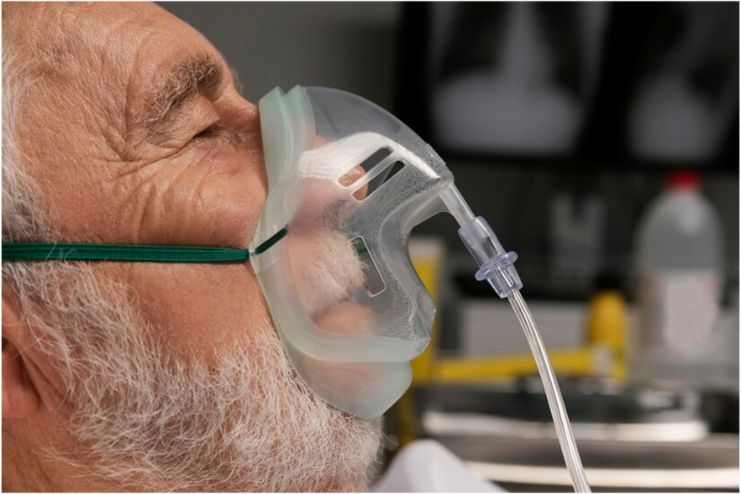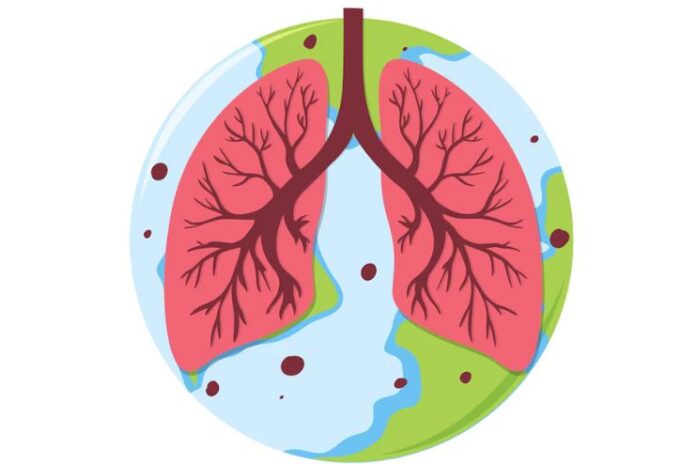Affiliate Disclaimer
Some links in this article are affiliate links. We may earn a small commission if you make a purchase through these links, at no extra cost to you. We only recommend products we find useful to our readersIdiopathic pulmonary fibrosis (IPF) is a chronic lung disease characterized by chronic lung scarring. The scarring impacts breathing because scarred lung tissues cannot allow oxygen intake.
Oxygen intake is compromised due to reduced lung function. The causes of IPF are unknown, though it is linked to genetic predispositions and environmental exposures. This disease mainly affects adults and can significantly impair their quality of life.
Early diagnosis and treatment of IPF lung disease are critical in slowing progression and improving outcomes.
IPF Symptoms and Early Signs of Pulmonary Fibrosis

Idiopathic Pulmonary Fibrosis (IPF) symptoms include several major symptoms that may worsen over time. Common early signs of pulmonary fibrosis include:
- Breathlessness, especially during exertion
- Persistent dry cough that does not improve
- Fatigue that disrupts daily activities
- Unintended weight loss
- Muscle and joint aches
- Clubbing of fingers or toes (widening and rounding)
If symptoms worsen rapidly, this indicates an acute exacerbation, which is a potentially life-threatening condition.
Treatment Options for IPF
Effective management of Idiopathic Pulmonary Fibrosis (IPF) includes:
- Antifibrotic Drugs: Medications like pirfenidone and nintedanib can slow disease progression by reducing lung scarring.
- Oxygen Therapy: Supplemental oxygen is used for managing advanced IPF patients as it improves the daily functioning capacity by managing shortness of breath.
- Lung Transplant for IPF: Lung transplantation may be done in critical cases, replacing damaged tissue of the lungs to provide relief in breathing.
These treatment options can manage the symptoms and offer an improved quality of life.
Research and Clinical Trials
The National Heart, Lung, and Blood Institute (NHLBI) is into the study and advancement of treatments for IPF. Here are some key points found in IPF research.
- The PANTHER-IPF study identified that the combination therapy of prednisone, azathioprine, and N-acetylcysteine (NAC) was harmful.
- The MUC5B gene significantly increases IPF risk.
Current Research Areas
- New medicines are designed to inhibit molecules responsible for lung scarring.
- The PRECISIONS trial is exploring genetic variations that affect responses to NAC, aiming to personalize treatments.
- Investigations focus on how lung stem cells and alveolar epithelium (tissue surrounding lung air sacs) contribute to scarring or repair after injury.
Lifestyle Management

Effective management of IPF requires regular exercise, diet, and breathing exercises:
1. Exercise
Engage in regular physical activity to prevent muscle wasting and optimize oxygen usage. High-intensity exercises may not be recommended, but low-impact activities. Here are a few suggestions:
- Walking: This helps with cardiovascular health and builds endurance without exerting oneself.
- Stretching or Yoga: It enhances flexibility, reduces stiffness, and encourages mental relaxation.
- Strength Training: Light weight training or resistance band exercises will help the muscles stay in good tone. Start slow and increase duration and intensity based on comfort.
- Rehab Programs: Pulmonary rehabilitation programs that provide supervised exercise and breathing techniques.
- Rest: Take rest when needed to avoid overexertion.
2. Diet
A well-balanced diet for pulmonary fibrosis reduces inflammation and supports the immune system. Some recommendations include:
- Anti-inflammatory Foods: Opt for fruits such as berries, vegetables like spinach, and nuts rich in antioxidants.
- Lean Proteins: Choose chicken, fish, tofu, and legumes to maintain muscle mass.
- Omega-3 Fatty Acids: Go for fatty fish, walnuts, and flaxseeds to reduce lung inflammation.
- Hydration: Keeping hydrated prevents the build-up of mucus and helps keep your lungs functioning.
- Portion Control: Eating smaller meals multiple times daily can help prevent fullness-induced breathlessness.
- Foods to Reduce: Reduce processed food items such as salty and sugary foods because they can cause inflammation and swelling.
3. Breathing Exercises
Respiratory exercise increases oxygenation in the blood, reduces anxiety levels, and improves lung function. Examples include:
- Pursed-Lip Breathing: It slows the respiratory rate, increases oxygen retention, and reduces shortness of breath.
- Take a deep breath through the nostrils, and slowly breathe out through pursed lips as if blowing off the candle flame.
- Diaphragmatic Breathing: Encourages the use of the diaphragm instead of the chest muscles to breathe, thereby improving oxygen flow.
- Place one hand on the stomach and inhale deeply to expand the belly, exhaling fully to contract it.
- Inspiratory Muscle Training (IMT): Strengthening the respiratory muscles can be achieved by using a resistance breathing device.
4. Sleep and Stress Management
Quality sleep and stress reduction are important for those who are managing IPF. Chronic fatigue and emotional strain can worsen symptoms.
- Sleep Tips: Elevate the head slightly to improve breathing and use supplemental oxygen if prescribed.
- Mindfulness Practices: Techniques like meditation or guided imagery can reduce stress and support mental well-being.
5. Avoiding Triggers
IPF patients should minimize exposure to environmental factors that exacerbate lung scarring, such as:
- Tobacco smoke and air pollution
- Harsh chemical fumes
- Allergens and respiratory infections
These strategies can improve lung function, reduce inflammation, and boost energy levels. Integrate regular exercise, take anutrient-rich diet, practice breathing techniques, and incorporate stress management techniques to slow down the disease progression.
Coping with IPF: Emotional and Social Support
We all need emotional support for chronic illness and so do IPF patients. IPF support groups give a sense of belonging.
Dedicated support groups, such as those hosted by Pulmonary Fibrosis Foundation (PFF), provide patients, caregivers, and families with an incredibly important network. Such organizations provide emotional encouragement, sharing experiences, and other pertinent resources that improve the quality of life for those with pulmonary fibrosis. PFF provides accessible options like groups in person, virtual support meetings via Zoom, and specific communities:
Mental health therapy can help the patient cope with anxiety, depression, or stress.
Family involvement in care will also benefit them in practical and emotional ways. Combined, these would make the patient strong and live well despite all the complexities of living with IPF.
Conclusion
IPF requires an early diagnosis and effective patient treatment, focusing on lifestyle adjustment and emotional support.
Currently, treatments like antifibrotic drugs, oxygen therapy, and lung transplants help manage the symptoms and improve the quality of life. However, research still finds more information about genetic and environmental factors influencing IPF.
New developments in treatment approaches, including personalized medicine and innovative drug development, likely slow down the progression of this disease and improve outcomes.
With holistic care and leading-edge research, patients can be given the best opportunity to live better despite this challenging condition.
References
- https://www.mayoclinic.org/diseases-conditions/pulmonary-fibrosis/symptoms-causes/syc-20353690
- https://www.nhs.uk/conditions/idiopathic-pulmonary-fibrosis/treatment/
- https://www.mayo.edu/research/clinical-trials/diseases-conditions/pulmonary-fibrosis
- https://www.nhlbi.nih.gov/research/idiopathic-pulmonary-fibrosis
In this Article


















